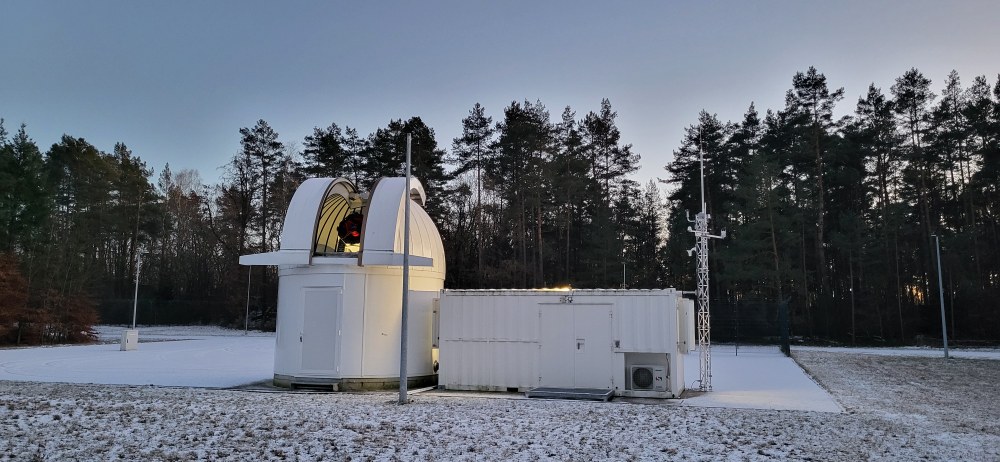Optical ground station (LaBoT)

An optical ground station (OGS) was set up at the DLR-site Trauen in 2023. The facility, known as the Laser-Bodenstation Trauen (LaBoT), enables tests for laser communication with satellites under real operating conditions. The planned remote operation of the entire system is at the centre of the construction. For this reason, the station essentially consists of three components: The most crucial part is the 70cm reflector telescope on a precision mount, that tracks previously loaded satellite orbits. The instrument is protected from harsh weather conditions by a 4.5 metre slit dome. A control container is located next to it and serves as a space for electronic equipment and for activities to be carried out on site.
The SOFA (Small OGS Focal-optics Assembly) is mounted at the telescope and is a specially manufactured optical instrument for laser communication. The SOFA connects the telescope with the receiver electronics and makes both devices compatible. In a generalised sense, it is the optical equivalent of a feed system for radio frequency antennas. It performs the following three basic functions: camera-based alignment and satellite tracking, calibrated power measurement and bidirectional data transmission.

The station is part of a national network of optical ground stations coordinated by DLR RSC³. This network concept enables us to carry out extensive field tests with Laser Communication Terminals (LCT) on satellites in Earth orbit. Specific examples could be investigations on site diversity and model comparisons of the optical free-space channel.
